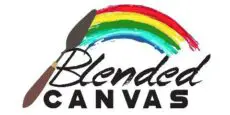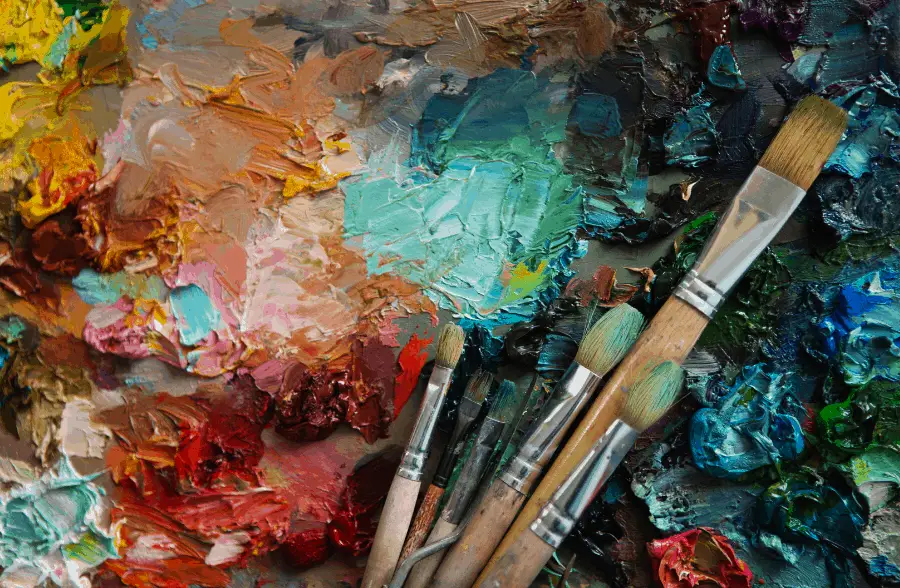Acrylic paint and gouache paint are very similar to each other, but still different. Gouache is opaque like acrylic but has properties like watercolor. Both paints are water-based, and dry quickly. While you can use them in the same project, many people wonder if they can be mixed together.
So, can you mix gouache paint with acrylic paint? Yes! You can easily mix gouache and acrylic paint together. It provides you with a paint that dries quickly, applies smoothly, easily layers, and combines all of the best benefits from each paint. The paint will have a creamy texture, vibrant colors, and is ideal for fine details.
Mixing gouache and acrylic will impact the matte finish of gouache paint and make it appear glossier. However, the colors will appear brighter and more vibrant than before, which can easily add dimension to your painting. In this article we go over everything you need to know about mixing gouache paint and acrylics. Let’s read on!
How to Mix Gouache Paint with Acrylics
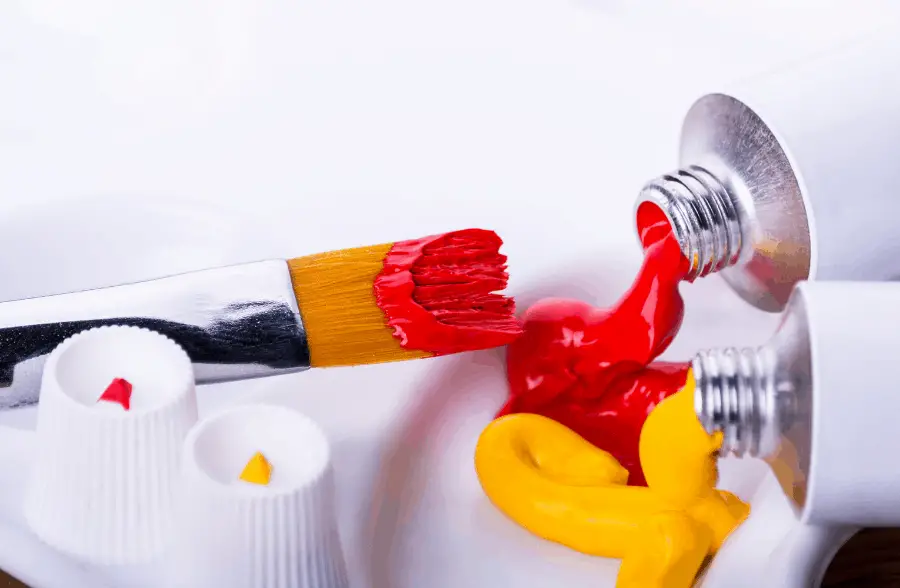
Since gouache and acrylic are both water-based, they will mix together easily. You are going to need a palette or a paper plate to put the paints on. Choose the gouache and the acrylic colors you want to mix and pour some out onto the palette.
My favorite and top pick is always Arteza Paints. They have so many different colors, and the quality is amazing! I usually use Arteza Acrylic Paints and Arteza Gouache Paints for all my projects.

When you have the paints on the palette, always be sure to leave enough room between the paints so that they don’t touch. This will allow you to move the right amount of each color to make the end color.
If the two paints touch, they have the potential to mix together before you are ready, which can create a color you didn’t want.
When you mix acrylic paint with gouache, it won’t be necessary to use water for the gouache paint. It will take the properties of the acrylic paint, creating a creamy texture that applies to the surface smoothly and prevents cracking.
Can You Mix Gouache Paint and Watercolors?
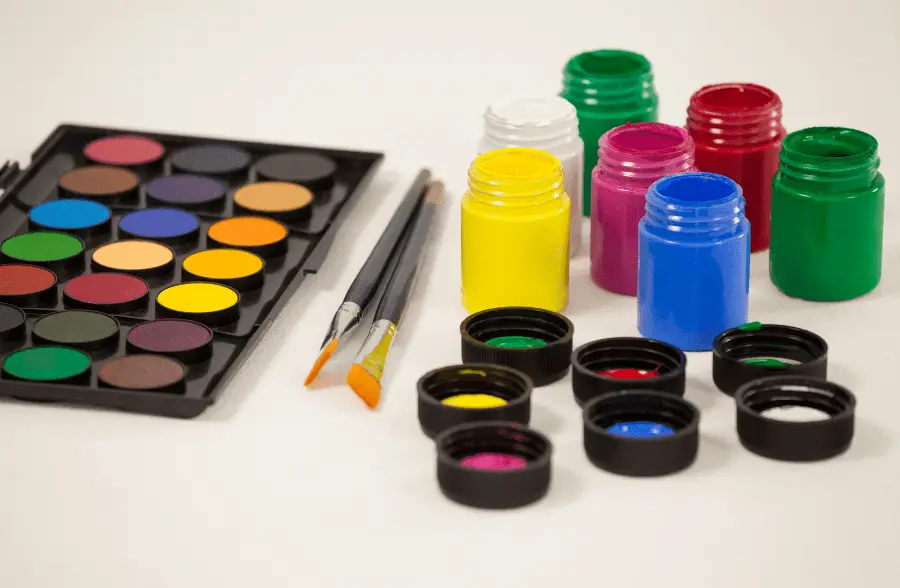
Gouache and watercolor paints share several properties with each other. They both need water to adhere to the surface properly, but one does so transparently while the other does so opaquely. The outcome of the mixture will depend on how much of each product is used.
When mixing with gouache paint, I like to use Tube Watercolors. They have more texture, and allow you to water them down if needed.

If you add more watercolor to the mixture, your paint will have less opacity. If you add more gouache to the mixture, your paint will be opaquer. You will still have the watercolor experience, because you still need to use water for application.
You can also use gouache paint as a way to highlight a watercolor painting. Since the gouache is opaquer, it can help you create some solid lines and details that you wouldn’t normally get with watercolor paints.
Can You Mix Gouache Paint and Oil Paint?
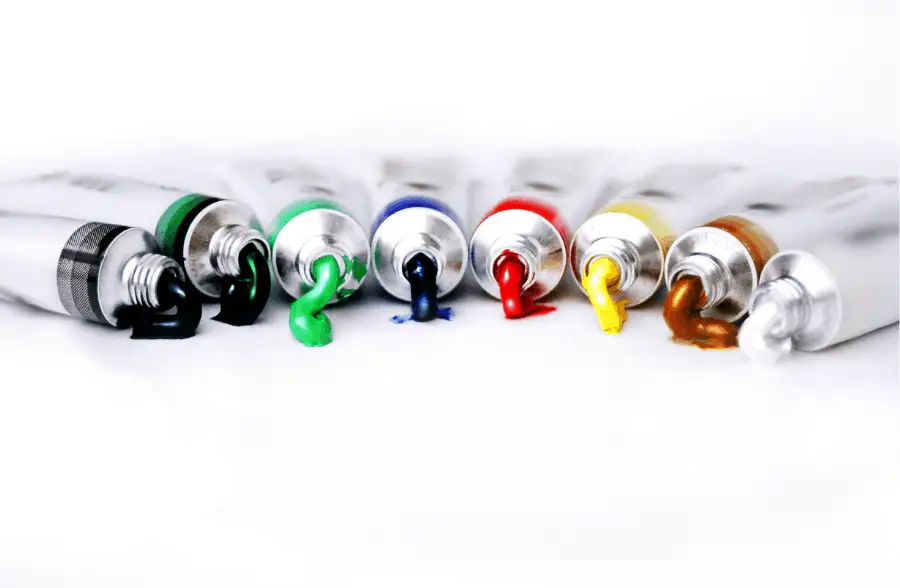
Since gouache is water-based and oil paint is oil-based, it is not likely that they will successfully mix together. Oil and water don’t mix, and this stays true in terms of paint. If you try to mix oil paints and gouache, you will notice that they tend to separate and not mix to create a new color.
If you do try to use gouache paint with oil paint, it is highly likely that you will notice bleeding from the oil paint. This will show in darker rings around where the oil paint was applied, and you won’t be able to get rid of them.
You could try to prime the paper with an oil-based primer to prevent bleeding, but then the gouache wouldn’t stick. If you used an acrylic-based primer, the oil paint isn’t likely to stick. Oil paints and gouache are not meant to be, and it is best to avoid using them together.
What Paper is Best for Gouache?
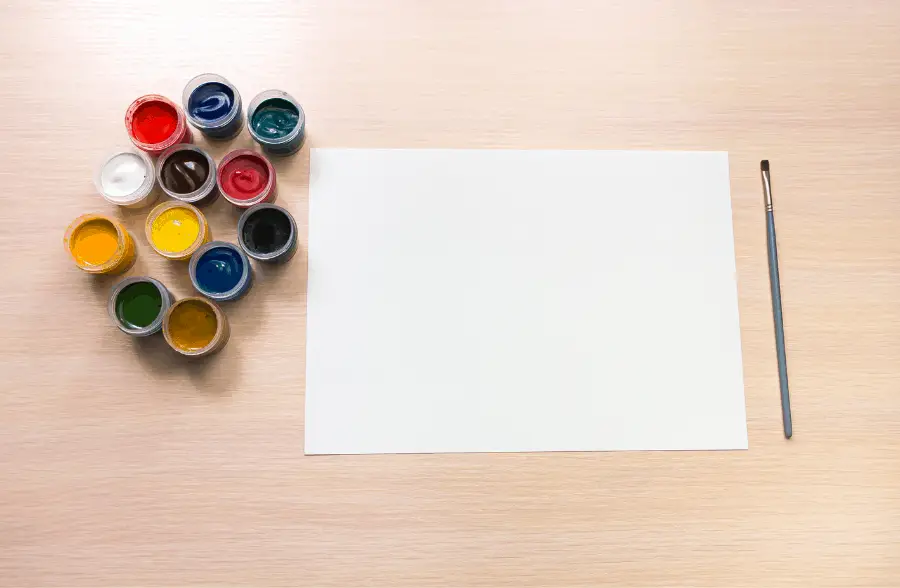
Gouache is an extremely versatile paint and has the ability to stick to several different surfaces. The best paper to use is going to be one that is at least 200 grams per square meter, like this Mixed Media Paper. It is best for the paper to have a soft texture, fine grain, and an oil free surface.

Any paper that is made for watercolor will likely be appropriate for gouache paint. A fine grain paper is preferred because it will help the paint adhere easily to the surface. Satin papers are also a great idea if you are going to be working with fine details. For a rougher texture to the paint, you can use a high texture paper.
No matter what type of paper you choose, it is important to make sure it is professional quality. You will notice that a professional quality paper will be thicker and holds up better to the addition of the gouache and water.
Gouache will typically adhere to surfaces that are non-oily. This means if you don’t want to use paper, you can try painting with your gouache on wood, plywood, and cardboard. You can also use a canvas, but it isn’t recommended because a canvas is better suited for the texture of acrylic and oil paints.
How to Seal Gouache Paint

Sealing a gouache painting isn’t necessary, but it does have many benefits. If you like to paint for fun, you don’t need to seal your gouache any specific way. You can do so with just a watercolor varnish or an acrylic sealer. If you are planning on selling your painting, the process will be a little more in-depth.
I recommend using Mod Podge to seal your gouache paint. You can use a spray on varnish, or brush-on Mod Podge.

When it comes to professionally sealing your gouache painting, you will need to apply at least three layers. First, make sure the gouache paint has dried completely before adding any sealant on top. If you apply the sealant too early, it can ruin your entire painting.
The first coating of sealant has the purpose of sealing the painting permanently and adding a waterproof layer. The first layer should not have the ability to be removed and should ideally be suited to watercolor paints. You can use an acrylic sealer or Mod Podge for the base sealant layer.
When the first layer is dry, you will apply the next layer. The second layer is called the isolation coat. You can add one or two of these layers, depending on how you feel comfortable. This layer will also be permanent and not removable. It will need to be a sealer that is acrylic-based. A waterproof acrylic sealant would be ideal. I recommend using this Golden Artists Isolation Coat.
After your isolation coat is dry, you can add the last layer. This layer is going to be a removable varnish. It is removable for the purpose of cleaning the painting every now and then. There are two or more coats of sealant under the removable coat to protect the painting during the cleaning process.
Final Thoughts
Gouache paint and acrylic paints are very similar to each other. If you do want to mix them together to create an acrylic gouache, you can. The process is simple and won’t take up any time at all. You just need to pour some of both products on a palette or paper plate for easy mixing.
You can also mix gouache paint with watercolors. The outcome of this mixture will depend on how much of each product you add to the mixture. It is also a popular misconception that oil paint and gouache can be mixed together.
Since oil paint is oil-based and gouache paint is water-based, the two paints will not mix together well. You will notice that they separate from each other when you try to mix them. Oil paint will also soak into gouache and leave oil stains, so it is best to avoid using these paints together.
Make sure to follow all my tips and recommended products to ensure your gouache paint and acrylic paint mix perfectly. Also, don’t forget to check out my other articles for all your painting Q&A’s. Happy painting!
